Pink eye in cattle is also called Infectious Bovine Keratoconjunctivitis (IBK) of ruminants and Infectious ophthalmia. It is characterized by blepharospasm, conjunctivitis, lacrimation, and varying corneal opacity and ulceration. Pinkeye is most common in beef cattle and highly contagious disease, causing inflammation of the cornea and conjunctiva of the eye.
Pink eye in cattle is one of the most devastating diseases that hamper production seriously. The disease is spread to the population rapidly and may spread to other organs like the nose and reproductive tract. The disease causes reduced eye vision and blindness that leads to starvation, malnutrition, accidents, and deaths.
Economic Importance of Pink Eye in Cattle
IBK or Pinkeye is a bothersome disease on your farm. The affected will die very less, but the production will hamper more. The disease will disturb both animals and the owner. The significant economic impacts of the disease are:
- Loss of milk production on dairy farms and loss of body condition caused by the discomfort and weaning of calves were reduced by 10%.
- Failure to feed, temporary blindness, and occasionally wholly blind and dying of starvation.
- Increase the incidence of accidents on your farm.
- Reduced the growth of beef cattle.
- Increase the accident with the herd.
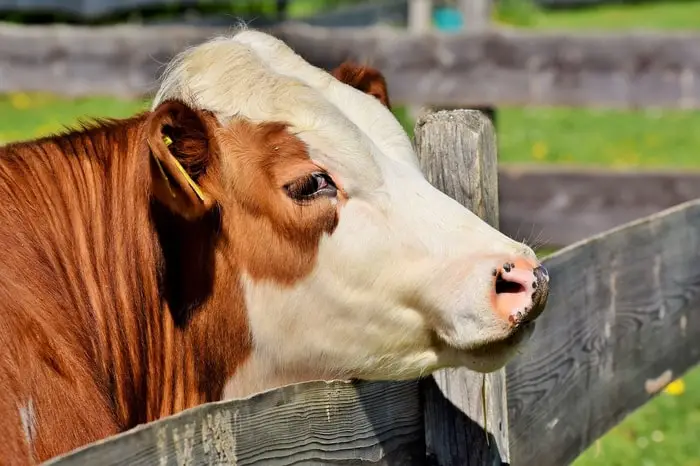
What Causes Pink Eye in Cattle?
Moraxella bovis is the only commonly recognized cause of Infectious bovine keratoconjunctivitis. Other organisms cause Pinkeye in cattle, either alone or in conjunction with Mycoplasma bovis and Neisseria spp. Infection with Infectious bovine rhinotracheitis or other microbes may increase the severity of infection with M bovis.
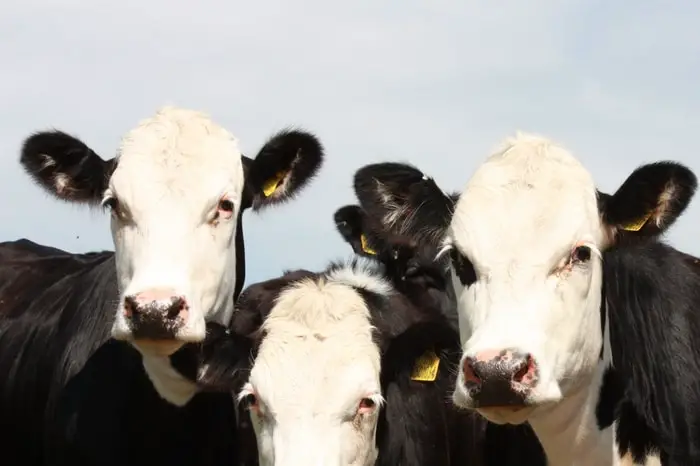
Transmission of IBK
The disease occurs sporadically or outbreaks in cattle throughout the world, and the young are more susceptible than adults. The disease occurs in most countries of the world and is most common in summer and autumn when flies and dust are abundant. The grass is long, as the transmission is through these agents contaminated by the ocular discharges of infected animals. Dry, dusty environmental conditions, shipping stress, bright sunlight, and irritants such as pollens, grasses, and flies tend to predispose to and exacerbate the disease.
Domestic flies Musca domestica and M autumnalis have usually transmitted this infection, and the conjunctiva is the portal of infection. The persistence of the disease from year to year is through infected animals that act as carriers.
Clinical Signs of Infectious Bovine Keratoconjunctivitis (IBK)
The clinical signs and rate of progression of the disease may vary from animal to animal. The disease may cause one or both eyes may be affected. The signs are:
- The initial signs are infection of the corneal vessels and edema of the conjunctiva, accompanied by copious watery lacrimation, blepharospasm, photophobia, depression of appetite, and later the discharge from the eye may become mucopurulent.
- Conjunctivitis with or without varying degrees of keratitis is always present.
- In 1 to 2 days, a small opacity appears in the center of the cornea, which becomes elevated and ulcerated during the next two days, purulent ocular discharge. About six days after the signs first appear, it may cover the entire cornea, and the color of the opacity varies from white to deep yellow.
- In the third stage, the cornea becomes red, ulcerative, and ruptures. The jelly-like fluid of the eyeball may be lost, and the eye shrinks into the middle.
- In most cases, the affected eye recovers by treatment, the blood vessels start to grow, opacity reduces, and cattle came into normal vision.
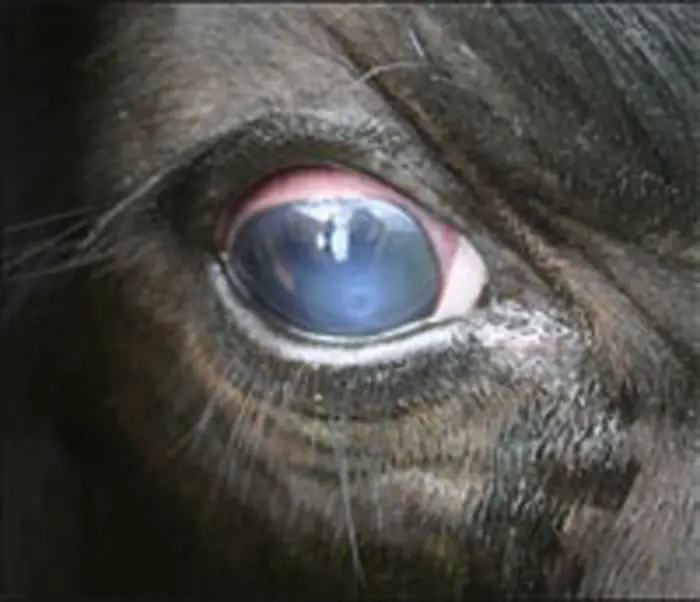
How to Diagnosis Pink Eye in Cattle?
Your vet performs the field diagnosis that can be made on history, epidemiological features, clinical signs, and degree of ulceration. It determined the infusion of a 2% fluorescein solution into the conjunctival sac, the ulcerated area retaining the strain. Microbial culture may be beneficial in confirming infections caused by M. bovis, Chlamydia spp, and Mycoplasma spp. Require special media and techniques. Serum agglutinins (1: 80 to 1: 640) can be detected by agar gel diffusion test (AGDT), and FAT for identification of M. bovis may be used for your cattle.
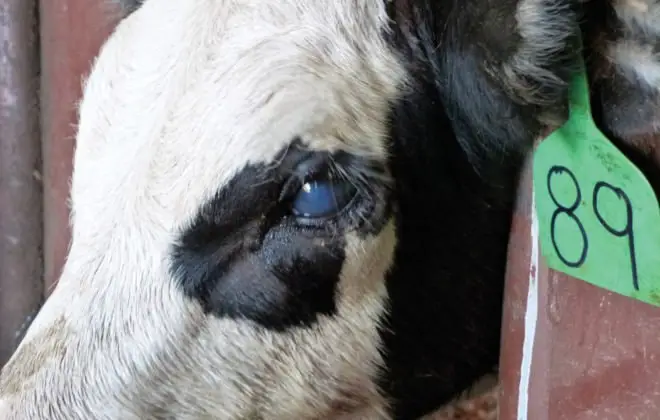
How to Treat Pink Eye in Cattle?
Pink Eye or IBK is a bacterial disease, and proper antibiotic treatment will cure the condition completely. The treatment procedures are as follows:
- Moraxella bovis is susceptible to a variety of antibiotics, including ampicillin, penicillin, gentamicin, and kanamycin, all of which your vet can be injected subconjunctivally.
- Oxytetracycline, you may consider the drug of choice for systemic therapy because it is concentrated in corneal tissue.
- Topical applications you should be applied at least thrice daily to be practical.
- Ophthalmic ointments and solutions containing antibiotics- chloramphenicol, oxytetracycline, penicillin-streptomycin, are instilled in the conjunctival sac at least three times daily.
- Intensive topical treatment with gentamicin plus autogenous vaccination gives a proper response quickly for your animal.
- The injection of an autogenous bacterin repeated several times at weekly intervals may help resolve existing ocular lesions.
- Hot water fomentation with boric acid, 2 to 4 drops silver nitrate solution 2% in each eye twice daily till recovery was found more effective than Terramycin ophthalmic ointment with the formulation.
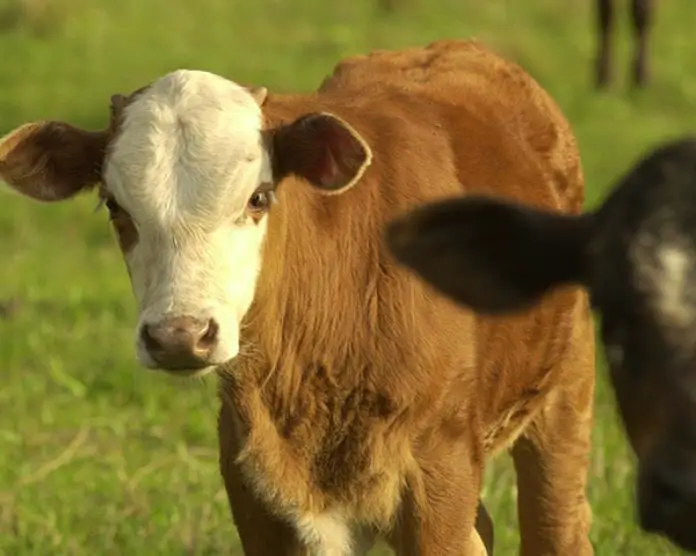
Prevention and Control IBK
As a farm owner, you can prevent the disease on your farm by taking a few preventive measures.
- Good management and hygiene is the most important factor to control the disease.
- Separate infected animals from healthy animals is beneficial when possible
- Dustbags or insecticide tags can be used to reduce the number of face flies
- Vaccines of Pink Eye from Sonicated pili of M. bovis induce protective immunity against homologous strain challenge exposure
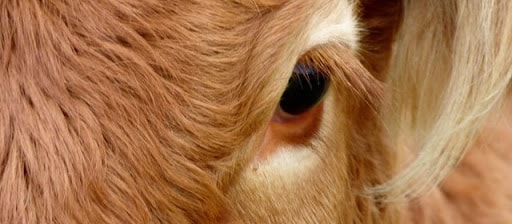
Final Advice on Pink Eye in Cattle
Pink Eye is a painful and mostly managemental disease on cattle farms. The disease is caused by bacteria and is mostly cured after adequate treatment. Good managemental practices, sound hygiene, and cleanliness reduced the fly population in the cattle shed. You can take extra precautions in the summer and autumn after the grazing of cattle. A better knowledge of the disease will help you to prevent and control it at the right time.